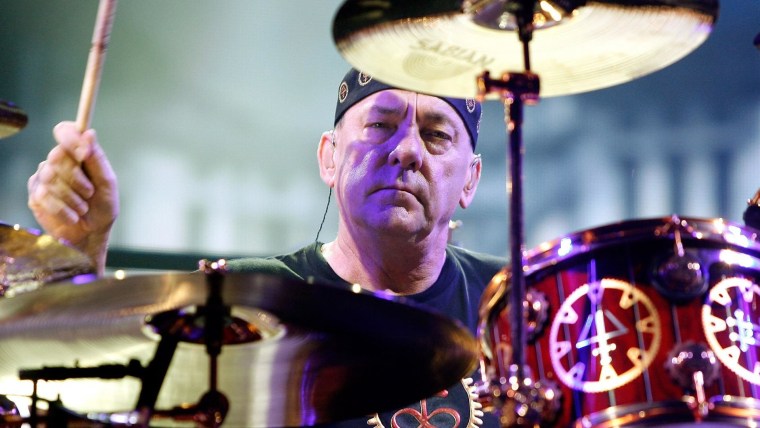

#Rush drummer peart how to
While an interesting travelogue, at its root Ghost Rider was a chronicle of how to repair a shattered self. In his 2002 book, Ghost Rider: Travels on the Healing Road, he described going to art museums in the afternoons before Rush concerts "to feed my growing interest in paintings, art history, and African carvings." Peart's erudition earned him the nickname "The Professor." It was apt: Carrying himself with an air of well-spoken authority, he possessed knowledge about a variety of topics, owing to his extensive global travels - on Rush tours, he was known for taking off on bicycle rides and, later, would hop on his motorcycle to travel between gigs - and a voracious curiosity about the world around him. "And, above all, his lyrics made people think - Rush fans were liberal, conservative, religious, non-religious - but they all united around their respect for the band and their admiration for how Neil could articulate their experiences, or give them a new way to look at an issue." "He made observations that the average fan could relate to, and he encouraged people to think for themselves, and to be themselves, too - to stand up for what they believed. "Writing lyrics, like drumming, was something he took seriously and respectfully," Halper says. Like the best songwriting, Peart's body of work was also malleable enough to grow with its listeners - his songs often mused about aging and the importance of dreaming the ominous "Subdivisions" railed against the conformist suburbs that "have no charms to soothe the restless dreams of youth."

#Rush drummer peart manual
That streak of individuality is also there in his songwriting, making Rush's lyrics feel more like a manual for life, full of economical quips ("I'm so full of what is right / I can't see what is good," from "The Color of Right") and thorny questions ("Roll The Bones" and its skepticism about faith). (He later clarified that Rand's work no longer resonated with him.) In a 2015 Rolling Stone cover story, Peart self-described as a "bleeding-heart libertarian." For much of Rush's career, Peart was also dogged by long-ago praise for the author Ayn Rand, whose works were an influence on the sprawling 1976 song cycle 2112. dropping atomic bombs on Japan in 1945, from multiple viewpoints. "Red Sector A," for example, emerged after he read accounts of World War II concentration camp survivors.

Peart's love of literature and reverence for history deeply informed his songwriting. Peart contributed his first lyrics to the band's 1975 LP, Fly By Night and, from there until Rush's final studio album, 2012's Clockwork Angels, he became known for his philosophical musings on road life and restless souls sharp critiques of power and greed fantasy-tinged vignettes and incisive political and social commentary, cloaked in metaphor. Peart didn't play on the studio version of "Working Man," but joined Rush that same year, replacing original drummer John Rutsey. record deal and breaking the band: In 1974, while working as music director and a DJ at the legendary Cleveland radio station WMMS, she spun an import copy of Rush's early single, " Working Man," which promptly took off. A media historian and former broadcaster, Halper is credited with getting Rush their U.S. had the ability to express complicated ideas in a rock song," Donna Halper, an associate professor of media studies at Lesley University, tells NPR Music. "There's a stereotype about rock music, that it's mundane or predictable. However, the Ontario native was a quiet leader who shaped Rush's voice, writing the bulk of the band's lyrics and maintaining a steely, rock-solid presence behind the drumkit. The musician and author, who passed away at the age of 67 on January 7 after a private, three-and-a-half-year struggle with brain cancer, famously eschewed the spotlight and rarely gave interviews. When Canadian prog-rock innovators Rush were inducted into the Rock & Roll Hall of Fame in 2013, it was both somewhat surprising and totally appropriate that drummer Neil Peart opened the trio's acceptance speech. The Rock & Roll Hall of Fame inductee died Jan. Neil Peart, of Rush, photographed in Cleveland on Dec.


 0 kommentar(er)
0 kommentar(er)
